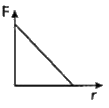The law of force between two charges is given by . . . . .
The correct Answer is:Coulomb
To solve the question regarding the law of force between two charges, we will refer to Coulomb's law, which describes the electrostatic interaction between charged particles.
1. Understanding the Charges:
- We have two point charges, denoted as q1 and q2. These charges can either be positive or negative.
2. Coulomb's Law:
- The force F between these two charges is given by Coulomb's law, which states that the magnitude of the force is directly proportional to the product of the magnitudes of the charges and inversely proportional to the square of the distance r between them.
3. Mathematical Expression:
- The formula for Coulomb's law can be expressed as:
F=14πϵ0q1q2r2
- Here, F is the magnitude of the force between the charges, ϵ0 is the permittivity of free space, and r is the distance between the centers of the two charges.
4. Direction of the Force:
- The direction of the force depends on the nature of the charges:
- If both charges are of the same sign (both positive or both negative), they repel each other.
- If the charges are of opposite signs, they attract each other.
5. Conclusion:
- Thus, the law of force between two charges is encapsulated in Coulomb's law, which provides both the magnitude and the direction of the electrostatic force acting between the charges.
- We have two point charges, denoted as q1 and q2. These charges can either be positive or negative.
- The force F between these two charges is given by Coulomb's law, which states that the magnitude of the force is directly proportional to the product of the magnitudes of the charges and inversely proportional to the square of the distance r between them.
- The formula for Coulomb's law can be expressed as:
F=14πϵ0q1q2r2
- Here, F is the magnitude of the force between the charges, ϵ0 is the permittivity of free space, and r is the distance between the centers of the two charges.
- The direction of the force depends on the nature of the charges:
- If both charges are of the same sign (both positive or both negative), they repel each other.
- If the charges are of opposite signs, they attract each other.
- Thus, the law of force between two charges is encapsulated in Coulomb's law, which provides both the magnitude and the direction of the electrostatic force acting between the charges.
Topper's Solved these Questions
- PHYSICAL WORLD BOOK - MODERN PUBLICATIONCHAPTER - PHYSICAL WORLD EXERCISE - Revision exercises (Short answer questions)
11 Videos
- PHYSICAL WORLD BOOK - MODERN PUBLICATIONCHAPTER - PHYSICAL WORLD EXERCISE - Revision exercises (Long answer questions)
6 Videos
- PHYSICAL WORLD BOOK - MODERN PUBLICATIONCHAPTER - PHYSICAL WORLD EXERCISE - Revision exercises (Additional questions)
5 Videos
- OSCILLATIONS BOOK - MODERN PUBLICATIONCHAPTER - OSCILLATIONS EXERCISE - Practice Test (For Board Examination)
12 Videos
- SYSTEMS OF PARTICLES AND ROTATIONAL MOTIONBOOK - MODERN PUBLICATIONCHAPTER - SYSTEMS OF PARTICLES AND ROTATIONAL MOTIONEXERCISE - Chapter Practice Test (for Board Examination)
16 Videos
Similar Questions
Knowledge Check
The force between two charged bodies is called
Amuscular forceBgravitational forceCmagnetic forceDelectrostatic forceThe force between two point charges in air is 100 N. If the distance between them is increased by 50%, then the force between two charges will be nearly equal to
A50NB56NC100ND44NVariation in force between two charges and their distance is given by:
A B
B C
C D
D
The electrostatic force between two charges is a central force. Why?
View SolutionThe force between two charges separated by a distance "1m" is "1.8N" .The charges are in the ratio "1:2 then the charges are
View SolutionThe law, governing the force between electric charges is known as
View SolutionThe force between two point charges in vacuum is 15N, if a brass plate is introduced between the two charges, then force between them will -
View SolutionThree identical charges are fixed at the corners of an equilateral triangle . If the force between any two charges is F, then the net electric force on each will be
View Solution
